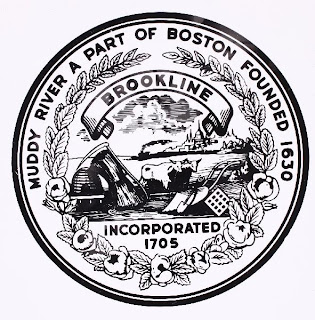For the country as a whole it had been 13 years since the start of Prohibition. But in Brookline the action of the Selectmen brought to an end nearly half a century without alcoholic beverages being legally available.
Brookline had been a dry town since 1887, when Town Meeting voted 452-268 to ban the granting of licenses for the sale of intoxicating beverages. (The town voted to go "wet" again in March 1920, but that vote was symbolic only; Prohibition had gone into effect nationally two months earlier.)
At least one local restaurant wasted no time: Gurley's Restaurant in Coolidge Corner (where Otto Pizza is today) advertised "legal beer" in the April 13 edition of the weekly Brookline Chronicle.
At least one local restaurant wasted no time: Gurley's Restaurant in Coolidge Corner (where Otto Pizza is today) advertised "legal beer" in the April 13 edition of the weekly Brookline Chronicle.
 |
| Gurley's Restaurant, where Otto Pizza is today, was one of the first to obtain a license when beer sales came back to Brookline after 46 years. |
Beer sellers were notified that their licenses were only temporary until a town-wide referendum could be held to approve or reject the granting of licenses. That came in June, with the "Yes" votes winning easily: 6,718 to 1,600. Voters also chose, by an even more overwhelming majority, to send "wet" representatives to the Constitutional Convention voting on ratification of the 21st Amendment to the U.S. Constitution which would repeal Prohibition altogether.
There was one more vote on December 28, 1933, three weeks after the final repeal of Prohibition, on whether to allow sales of hard liquor and stronger beer and wine in Brookline. That too was approved, although turnout was light. Two days later, coincidentally, the Coolidge Corner Theatre opened its doors, bringing the movies to Brookline after a 20 year fight against allowing a theater in town. Brookline was definitely loosening up.


